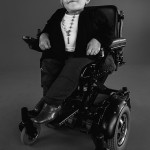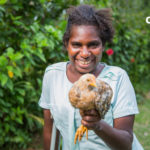Collecting Stories for Change
September 28, 2017

Mauricio, Santo Tomas, Nicaragua
Collecting stories from the field show the impact of investments. Often this trip will mean that someone flies in and flies out of a low or middle income country, often from a fundraising office, gets a consent form signed, takes some photos, maybe some videos and heads back home as soon as possible.
But what if a resource collection was connected to programme objectives? What if the success of a resource collection was not only measured according to the quality of the final product? How many likes, share or money it raised, take a backseat and the focus becomes the way in which it was collected. Suddenly not only is the organisation collecting stories from the field, but in doing so, the human rights of person in the story are not only encouraged, but evident in the final product.
For many people with disability living in poverty, making decisions about their own life is only a dream. I have visited many people with disabilities in their homes, some whom have never left their house, never been to school, had meaningful friendships or been a part of their local community. Most experience some type of exclusion or discrimination not only from their local community, but also within their family.
CBM’s End the Cycle collects stories from persons with disabilities using the human rights principles stated in Article 3 of the UN Convention on the Rights of Persons with Disabilities. This means that consent is not only informed and completely voluntary, but any decision made is in their hands, after all, the story is about them.
End the Cycle is committed to ensuring every person we collect a story from sees and comments on drafts of their story. People get to pick the photo they want to represent them. They suggest edits to be made, and if possible, every effort is made to accommodate them.
Too often resource collections are all about the needs of the office sending the film crew. Flipping this over so that it’s the person in the video that is the centre of all decisions, means the process of collecting stories is promoting the human rights and inherent dignity of each individual.
I always tell the talent that they can let me know if they want a break or to stop filming. Recently I was filming a 19 year old woman who is blind. It was towards the end of her interview and she was having a break. The crew had a few more questions left. The Director said “it should take about 10 more minutes, about 3 questions.” She replied with “actually, let’s make it 8 minutes.” Although seemingly insignificant, to End the Cycle, this is a huge success. She was not only in charge of what was happening, but she knew she was in charge and we adjusted so we could wrap up in the time she needed.
Rights based video making isn’t rocket science. Simply put, the rights of the story teller come first. For example, not pushing a person to admit something embarrassing or difficult about their life just because it makes for a more interesting story. I’ve had several stories not go to plan when the talent didn’t talk about something significant, often about their disability, that I was expecting them to. While this might affect the perceived ‘quality’ of a story from my side, not pushing for angle that’s more in my interests than theirs is crucial.
The impact of rights based video making is evident. After a long day of filming in Nicaragua, the talent said to me ‘today I felt important’ or another person in Jordan said ‘today was the best day of my life.’ Too often the objective of the filming is the rewards of the final product, but there can be rewards in the production when taking the human rights of the talent into consideration. Content producers have a unique opportunity not to only document the objectives of human rights organisations, but interact with and aid in the people and programs.







